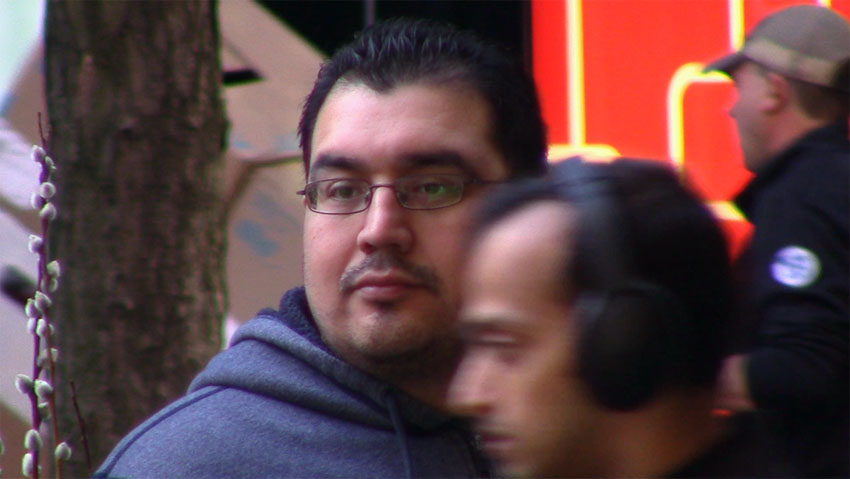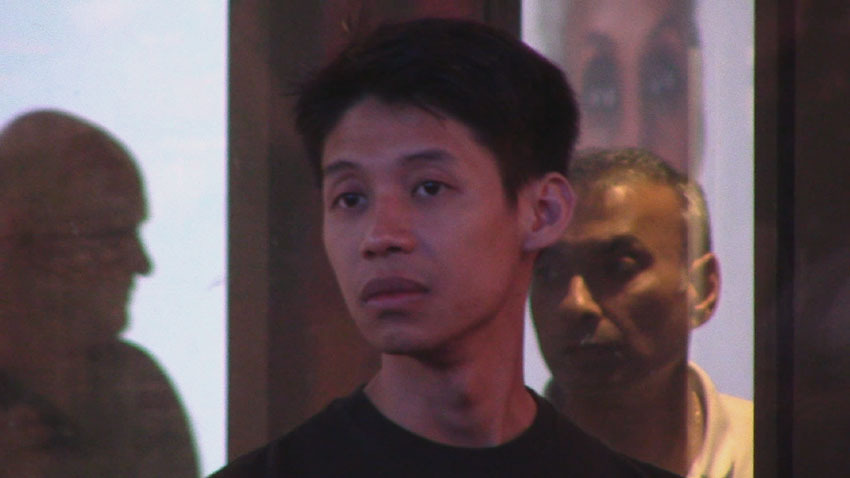aurélien
grèzes STANDING .
Times Square
.
Boston
.
Philadelphia
. Paris
. New-York
.
On "Standing"
in between
enclosed
shell
nothing
flows bounces splittings
self-portraits
3 words departures
the chosen
letters ABOUT
+ @
|
|
|
|

On
Standing
In Standing I capture people’s presence among
the crowd, through the passage of time.
I conceived these videos
as between
reality and fiction.
The filming concept is simple and constant: I ask people to stand
at a place of my choosing;
then, I disappear.
They do not know where I am hidden. I do not cast participants:
everyone is welcome.
They come as they are
and this is how I want to film them. The participants do not play
a character.
I do not give them any particular instructions, other than to stand
in place during the filming.
I am interested in what this generic situation produces: being
at a certain place, at a certain moment.
From one person to another, none of these “performances” is
the same. Nuances are minimal, so the viewer is drawn to the details.
I am using the video camera as magnifying glass to reveal micro
events and gestures that go unnoticed in reality.
I like to observe
how they behave, how their bodies and gazes move, how they occupy
the space and manage the time.
Roaming around, their respective gazes or stares carry an intriguing
meaning. Are they looking for me?
Are they pretending to wait for
someone else? Are they simply waiting for the end of the filming?
Sometimes, they feel uncomfortable; other times, they do not.
They may imagine - wrongly, usually - that people around them notice
the filming.
Passing through the frame as they walk around, “extras” are
not aware of the filming.
Interactions with the “performers” happen
though glances or grazing, ephemeral encounters between reality
and “fiction”.
|
|
| |
|
|
STANDING in
Times Square, NY (2020)
|
|
|
| |
|
|
|
Scouting for locations, I look for places where
participants will be surrounded by the crowd but slightly detached
from it. A crowded location helps them to forget the camera,
as they are distracted by the people around. When I am filming
I am hidden: as the camera is “invisible”, it’s
easier to forget it.
I try to “catch” moments when participants
are lost in their thoughts. After the sudden and ephemeral moment
of “awakening”, they “reconnect” to the
space they inhabit and people surrounding them.
I like these back and forth between the inner and the outer worlds.

STANDING in Times Square,
NY (2020)
My intention is to generate and enhance the tension
between participants’ awareness of being filmed and the
fact - the illusion? - that they seem to forget themselves. How
does the spectator react to this ambiguity? How does this tension
shape, in turn, the spectator’s presence?
As spectators of the video, we watch people who
watch people. Across the screen, duration has various and opposite
effects: attraction, lassitude, nervousness, stillness, etc.
Sometimes the participant’s gaze seems penetrable: his
gaze absorbs the spectator’s. Or, uncomfortable in the
situation, their faces close, avoiding eye contact with passers-by, “rejecting” the
spectator.
I see the participant’s gaze as a reflective
surface, a mirror of the spectator’s presence in front
of the screen.
Standing is a conversation between the viewer and
the viewed.
While the spectator’s gaze is “directed” by the participant
appearing on the screen, the participants,
despite the hidden camera, offer a performance to invisible and imaginary spectators
who will see the show.

Screening of STANDING at
the Queens museum, NY (2015)
|
|
|


